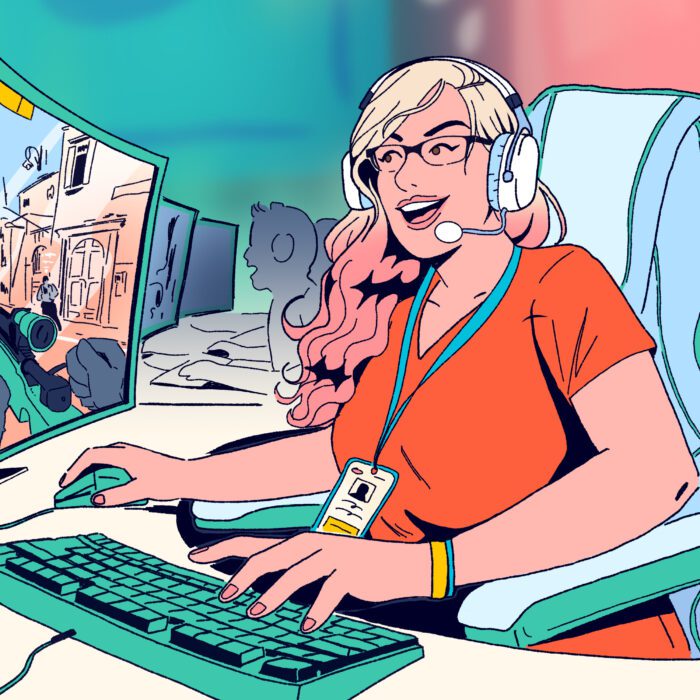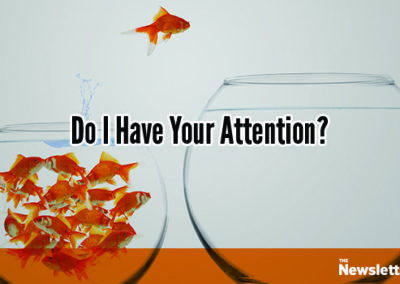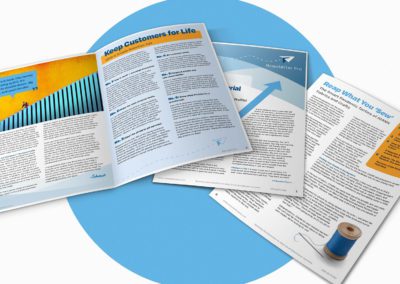Gaming newsletters have quietly revolutionized the way Minecraft players connect with their favorite metaverse, offering a weekly dose of insider knowledge straight from the heart of development studios as the developer publishes updates and insights. They’re not just about gaming news; they’re a bridge between Minecraft players and the ever-evolving metaverse of entertainment, fostering a shared vision and culture that developers and companies strive to build upon. As these curated content pieces from companies make their mark on gaming history, particularly when a company publishes significant Minecraft updates, they become more than mere updates—they are pivotal in shaping player engagement and community settlement around series and platforms within the metaverse. Dive into the dynamics of gaming newsletters that a company publishes weekly to understand how this seemingly simple communication strategy keeps people informed and involved in the interactive metaverse worlds they cherish.
Essence of Gaming Newsletters
Gaming newsletters are crucial for keeping players informed about the latest company updates, especially when a new metaverse experience publishes this week, fostering a sense of community. Spencer’s company publishes a prime spot for getting the scoop on exclusive content each week.
Industry News Updates
Gamers always want to know what’s up. What’s the latest game release? Which console is getting an upgrade? A gaming newsletter, featuring insights from Spencer, publishes hot-off-the-press info on the metaverse straight to your inbox. Imagine waking up to news that Spencer publishes about the next big thing in gaming, the metaverse, before it trends on Twitter. That’s what Spencer publishes in these newsletters – a VIP pass to knowledge town in the metaverse.
They don’t just skim the surface, either. We’re talking deep dives into industry shake-ups, interviews with top dogs in game development, and stats that would make even a mathematician do a double-take, all published in our comprehensive reports. It’s like having a backstage pass that publishes insights to the gaming world 24/7.
Community Building
Now, let’s talk about bringing people together. Gaming isn’t just about beating levels or bosses; it’s about sharing those “whoa” moments with others who get it and publishes the excitement of victory. Newsletters can be like the cool hangout spot where gamers and devs swap stories over virtual coffee, and regularly publishes content to keep the community engaged.
They shine a spotlight on fan creations too – think art, mods, or epic gameplay clips that deserve more eyes on them. Plus, there’s often space for Q&As where you can grill developers on why they made your favorite character take that plot twist.
It’s not all fun and games though (well, technically it is). Serious discussions happen here too – tackling issues like inclusivity or mental health in gaming communities.
Exclusive Content Access
Who doesn’t love feeling special? Subscribing to a gaming newsletter might mean you’re first in line when “early access” rolls out for a new title or expansion pack. These emails can be your golden ticket to beta tests where you play detective and help squash bugs before anyone else even sees them.
And we’re not just talking games here – think discounts on merch, invites to exclusive events (virtual or IRL), and maybe even codes for in-game loot that’ll have your friends green with envy.
Top Picks for Gaming Newsletters
Gaming newsletters are a hot ticket for the latest scoop in the gaming world. From high-subscriber giants to niche gems, there’s something for every type of gamer.
Leading Gaming Giants
Big names dominate the game. These newsletters have amassed legions of fans hungry for daily updates, reviews, and industry news. Think of them as your morning coffee – essential and energizing. They cover everything from AAA titles to indie games, ensuring you never miss out on what’s trending.
One prime example is IGN’s Daily Fix. With its massive following, it delivers a comprehensive blend of news, previews, and special features. Another big player is Polygon’s newsletter offering deep dives into gaming culture alongside breaking news.
Niche Genre Specialists
But it’s not just about size; it’s about fit too. Specific newsletters zero in on particular genres or platforms that might tickle your fancy more than general news does. Fancy strategy games or RPGs? There’s a newsletter out there with your name on it.
For instance, The Strategy Gamer sends out weekly dispatches that are pure gold for fans of tactical and strategy-based gameplay. Meanwhile, Platformer focuses (you guessed it) on platformers and indie darlings that often slip under the radar.
Independent Voices
Then there are the independent trailblazers. These newsletters bring unique perspectives often missing from mainstream outlets. They’re like finding that hidden track on your favorite album – refreshing and original.
Take Critical Distance for example; this newsletter curates insightful essays and critiques from around the web, offering food for thought beyond press releases and hype trains. And then there’s The Indie Game Website’s newsletter which shines a spotlight on lesser-known indie titles with heartfelt reviews by passionate gamers.
Crafting a Player-Centric Gaming Newsletter
Know Your Players
Gaming newsletters must hit the mark. They should feel like they’re made just for you, whether you’re a hardcore “Minecraft” builder or someone who casually crushes levels during lunch breaks.
Understanding different gamer types is key. Some folks live in their game worlds, while others are weekend warriors. Content that makes both nod in agreement? That’s the sweet spot.
Interactive Fun
Next up, let’s jazz things up. A newsletter shouldn’t be a one-way street; it’s gotta have some zing to keep players coming back for more.
Adding polls and quizzes can transform your newsletter from snoozeville to fun town. Imagine getting to vote on your favorite “Minecraft” mods or challenging your brain with a gaming trivia quiz—engagement through the roof!
Data is King
Alright, now let’s talk smart moves. Using data analytics isn’t just fancy talk; it’s about understanding what makes players tick.
By looking at what gamers click on, share, and spend time reading, you can fine-tune your content. It’s like having a roadmap to player happiness.
Unveiling Game Development Labor Organizing
Labor movements in game development are gaining momentum, and newsletters have become a pivotal tool for shining a light on industry conditions. They also play a crucial role in broadcasting the latest updates on unionization efforts.
Rise of Labor Movements
Game developers are banding together like never before. Long hours, crunch time, and job instability have pushed many to say “enough is enough.” It’s not just a few grumbles here and there; it’s an uprising. Studios across the globe are witnessing their workers unite for better treatment.
These aren’t isolated incidents either. The movement is spreading faster than wildfire through dry brush. Every day, more devs are standing shoulder-to-shoulder, ready to demand change.
Newsletters Spotlight Conditions
Imagine getting the real scoop on what goes down behind the scenes of your favorite games—newsletters make that happen. They’re like the undercover agents of gaming, revealing truths that big companies often keep under wraps.
Newsletters can be game-changers (pun intended). They pull back the curtain on what it’s really like to work in game development: the good, the bad, and the ugly. And trust me, sometimes it gets pretty ugly.
Unionization Efforts Reported
When devs decide to form a union, it’s big news—and newsletters are all over it! From whisperings of discontent to full-blown campaigns for fair pay and humane working hours—they report every step of the way.
They don’t just skim over details either; they dive deep. You’ll get stories straight from those in the trenches: why they’re fighting, what they hope to achieve, and how close they are to victory (or defeat).
Effective Newsletter Advertising Strategies
Targeted Ad Tactics
Gaming newsletters are hot stuff. They’re like the secret level in a game where all the cool players hang out. To win at newsletter advertising, you gotta think like a gamer—always on the lookout for the next challenge. The trick is to serve up ads that fit what readers already dig.
Imagine knowing what games someone likes and then showing them ads for similar stuff. That’s targeted advertising. It’s like giving gamers a power-up that leads them straight to things they actually want to buy.
Editorial vs Sponsored Balance
Now, nobody likes it when ads get in the way of good content—it’s like a laggy connection during an epic boss fight. Newsletters have to keep it real with their readers while also making some coin with sponsored content.
Keeping editorial integrity isn’t just nice; it’s crucial. Think of your favorite gaming mag or website. You trust them, right? That trust is gold for advertisers too because if readers believe in what you say, they’ll take your ads seriously as well.
Crunching Ad Numbers
Here comes the brainy part: measuring how well your ads do. Click-through rates (CTRs) and conversion metrics are your high scores here—they tell you if people are just looking or actually buying.
It’s simple: if lots of folks click on an ad but don’t buy anything, something’s off. Maybe it’s like offering a strategy guide to someone who only plays button-mashers—not quite their thing.
Ecommerce Brands and Sponsored Content
Ecommerce brands are finding new ways to promote products through gaming newsletters. These strategies include seamless integration, influencer partnerships, and exclusive offers.
Seamless Product Promotion
Imagine reading about the latest game release in your favorite newsletter. Then, you spot a product that enhances your gaming experience. That’s no accident! Brands are getting smarter with their ads. They weave promotions into stories we care about. It’s like finding Easter eggs in a game, but these can actually help you level up in real life.
Influencer Partnerships
Now, let’s talk about team-ups. Gaming influencers have fans who hang on to their every word. When these gamers recommend something, it’s like gold dust for companies. So, ecommerce brands team up with them in newsletters. This way, they reach people who trust these influencers’ opinions more than traditional ads.
Exclusive Offers Impact
Who doesn’t love a good deal? Gamers are always on the lookout for discounts on gear and games. Ecommerce stores use this to their advantage by dropping discount codes and special offers into newsletters. It’s like having VIP access to the best deals before anyone else knows about them.
Analyzing Game Reviews and Criticism
Summarizing Professional Insights
Gaming newsletters have revolutionized how we digest game reviews. They condense expert opinions into bite-sized, easily accessible updates.

Professional game reviews pack a ton of information. In newsletter form, they’re boiled down to the juiciest parts. It’s like getting the highlights without sitting through the whole match. You get what’s good, what’s bad, and why you should care.
Critical Analysis Depth
Surface-level commentary is old news. Today’s gaming newsletters dig deeper.
They don’t just tell you about awesome graphics or cool controls. They explore how a game makes you feel and think. It’s about understanding the story behind each character jump or puzzle solved. This type of analysis can change how you see a game entirely.
Sparking Discussions
Controversial critiques can start some fiery conversations. Gaming newsletters are perfect for stirring the pot.
When a review challenges popular opinions, it gets people talking. Maybe it questions if a bestseller is really that great or points out an issue no one else has seen yet. That’s when your inbox becomes a battleground for debate!
Glimpses into the Games Industry
Gaming newsletters serve as a treasure trove of insider info and developer tales. They track key stats, shaping how we understand the video game landscape.
Insider Game Scoops
Gaming newsletters can be like secret maps leading to hidden treasures in the vast world of video games. They often spill the beans on what’s cooking in game studios before anyone else gets a whiff. Imagine getting a sneak peek at the next big esports sensation or an exclusive tip about an upcoming metaverse experience. That’s the kind of gold you could find in your inbox!
Developer Diaries
Ever wonder what it’s like to create the games you love? Newsletters bring you closer to that reality with stories straight from the horse’s mouth – the developers themselves. It’s not just about coding and designing; it’s about late-night pizza runs, epic brainstorming sessions, and those eureka moments when a new game feature is born.
Stats at Your Fingertips
For those who geek out on numbers, gaming newsletters are like candy stores. They dish out sales figures, market growth trends, and even player statistics that help paint a picture of where gaming is headed. With this data, you’re not just playing games; you’re understanding them on another level.
Conclusion
FAQs
What are gaming newsletters?
Gaming newsletters are regular email updates that provide news, reviews, and insights about video games and the gaming industry.
How can I subscribe to a gaming newsletter?
Just find a gaming newsletter you like and sign up on their website with your email address. It’s usually as simple as clicking “subscribe”.
Are there any free gaming newsletters?
Yes, many gaming newsletters are free. They’re supported by ads or sponsored content to keep them at no cost to you.
Can I get exclusive content from gaming newsletters?
Absolutely! Some newsletters offer exclusive interviews, beta access codes, or discounts on games and gear for their subscribers.
How often will I receive updates from a gaming newsletter that covers the game industry, including video game releases, esports events, and news from publishes?
It varies—some send daily briefs, while others might be weekly or monthly. Check their subscription details for the frequency.
Is subscribing to a gaming newsletter focused on the game industry and esports, including titles like Minecraft, safe for my privacy when engaging with video game content?
Generally yes, but always make sure you’re comfortable with their privacy policy before giving out your email.






